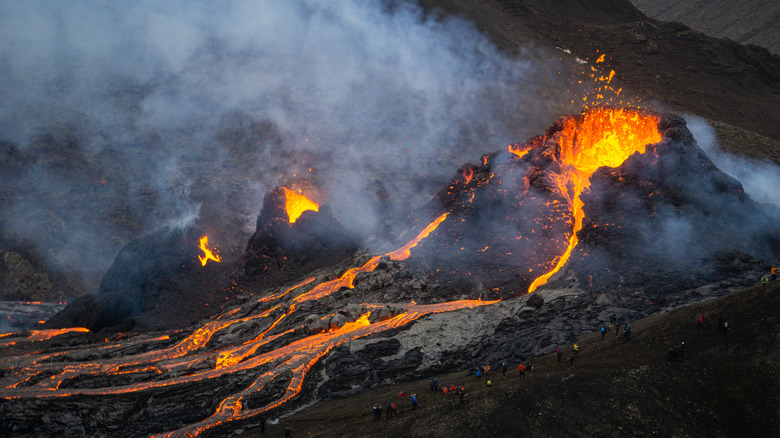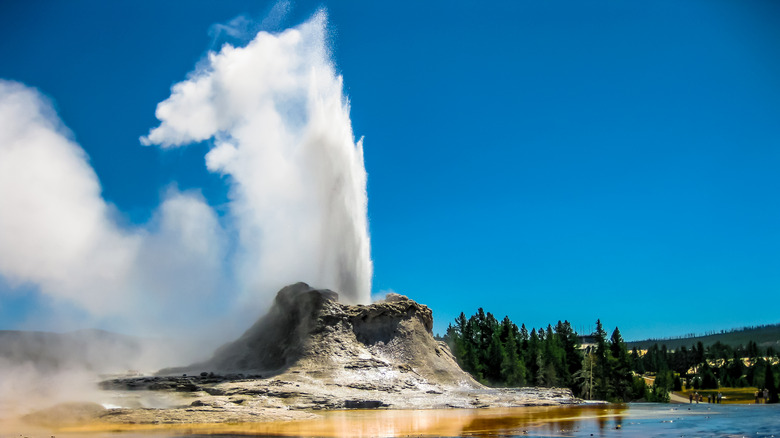Why Some Scientists Predict A Supereruption Will End The World
Our planet's time in the universe, or at least its capability of supporting life, is limited. Although no human will likely be around to witness it, the sun will turn into a red giant in a few billion years and swallow up the Earth. Nevertheless, the planet could be long dead by then. One of the more likely ways the world could end for the living is a supereruption. In fact, it's happened a few dozen times already (via Listverse).
If a volcanic eruption is massive enough to spit out 240 cubic miles of volcanic material, it is dubbed a supereruption. Supereruptions pave the way for massive extinction events, and the ash spewed is enough to block out the sun and incite minor ice ages, which bring about even more death. One of the more famous supervolcanoes is the Yellowstone Caldera, a huge cache of lava underneath Yellowstone National Park that could have devastating effects if it erupts. Luckily for us, that will likely take thousands of years.
Yellowstone could hold the end of the world
According to USGS, Yellowstone has erupted before. The Caldera that stands today — a crater formed by an eruption — came about after over 580 cubic miles of volcanic material were shot out around 2.1 million years ago. Another supervolcano is Mount Toba in Indonesia, which erupted with a force of 671 cubic miles 74,000 years ago. Elsewhere, the site of the most recent known supereruption, Taupo in New Zealand, blew its top around 22,600 years ago. For comparison, the 1980 eruption of Mount St. Helens released about .06 cubic miles of volcanic material.
Volcanic eruptions during recorded history have shaken the world in multiple ways, causing societies to fall and generations to starve from the global weather and climate effects of ash in the atmosphere. Yet no eruption has matched the force and output of a supereruption, and in one year, some believe there could be a blast so strong it leads to the end of all life on our planet.

